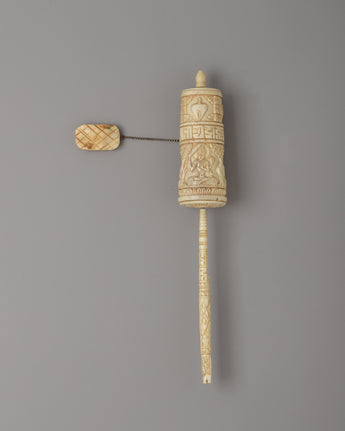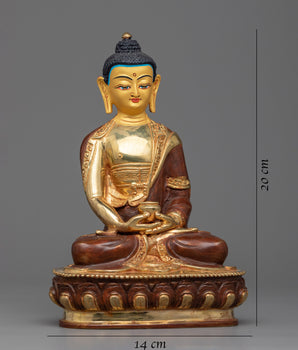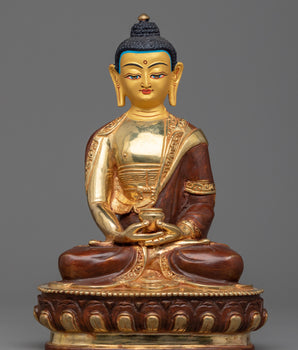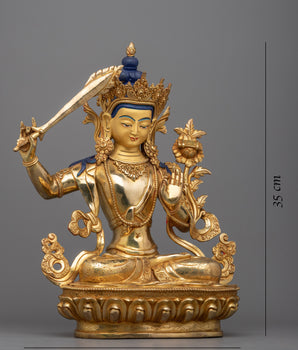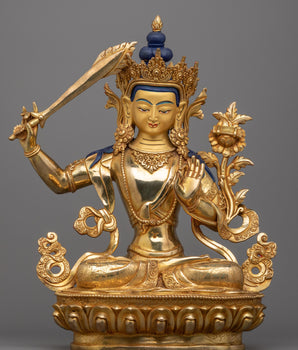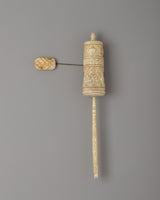
Handmolded Prayer Wheel | A Buffalo Bone Tibetan Mani Wheel

100% AUTHENTIC

HANDMADE

FREE SHIPPING
Spinning Buddhist Prayer Wheel for Meditation and Rituals
--------------------------------------------------------
Size: 28 cm(Height) x 4.2 cm(Width)
Weight: 0.16 kg
Materials: Ethically Sourced Buffalo Bone
--------------------------------------------------------
About our Prayer Wheel
This hand-carved Prayer Wheel is made of buffalo bone and features intricate craftsmanship. The wheel measures 28 cm in height and 4.2 cm in width, and weighs 0.16 kg, making it suitable for ritual use. The prayer wheel is designed with traditional Tibetan motifs, emphasizing its spiritual significance. It has intricate carvings on its cylindrical body representing peace, mindfulness, and the repetition of mantras during meditation. The wheel is attached to a long handle, making it easy to hold and rotate during rituals.
Tibetan Buddhists use prayer wheels to spread blessings, wisdom, and compassion. As the wheel spins, the prayers and mantras within it are symbolically recited, increasing their power. The physical act of turning the prayer wheel aligns the practitioner's intentions with the universal flow of positive energy, thereby purifying the mind and cultivating a deeper connection with the Buddha's teachings. This particular prayer wheel, made of buffalo bone, is thought to have added significance because of its material, which is often associated with strength and spiritual foundation.
Introduction to Prayer Wheel
A prayer wheel is cylindrical on a spindle used in Tibetan Buddhism. It is typically inscribed with the mantra "Om Mani Padme Hum" and rotated by hand as a form of spiritual practice and to accumulate merit. Spinning the wheel is believed to have the same spiritual benefits as verbally reciting the mantra. The use of prayer wheels is widespread in Tibetan Buddhism and has spread to other cultures.
How does the Buddhist Prayer Wheel benefit us?
The benefits associated with rotating the wheel are numerous. It promotes knowledge, compassion, and bodhicitta in the practitioner and improves siddhis (spiritual powers such as clairvoyance, precognition, etc.). The practitioner can repeat the mantra as often as possible while the wheel is rolling, maintaining a calm, meditative attitude. A Tibetan Buddhist tradition holds that after a practice session, one should dedicate any acquired merits to the benefit of all sentient beings. Then three times, Om Ah Hum. This is usually among Tibetans after finishing any Buddhist practice, including the prayer wheel exercise.
Why choose Evamratna?
To give your space a peaceful, powerful, and attractive feel, we are introducing Buddhism-inspired home décor items to enliven your space with zen vibes, in the form of decoration, an art form, or inspiration.
Shipping & Returns
We ship worldwide. Orders dispatch in 2–3 business days. International delivery typically arrives in 4–10 business days via DHL Express, depending on destination and carrier conditions. All items ship free globally.
Returns are accepted within 14 days of delivery. Products must be returned in original condition for a refund to be issued once received and inspected. Terms and conditions apply.


